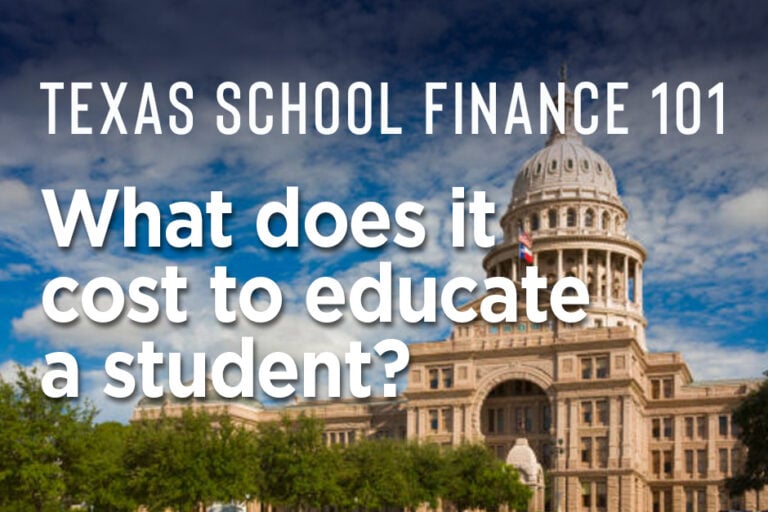
The article below is the seventh in a series designed to give readers insight into the school finance system in Texas. School finance is complicated. But it matters because it affects everything: student learning, teacher pay, school facilities, security, school buses, computers, career and technical opportunities, internet access, sports, fine arts and on and on and on. Ultimately, it affects the future of Texas.
Each article in the series will bite off a small piece of school finance and attempt to give readers a basic understanding of the system in Texas and Arlington ISD. Check back each Wednesday for a new article.
What does it cost to educate a student in Arlington ISD?
That’s not a simple answer because the expense incurred per student can vary widely based on any number of reasons. Each student has different needs, activities and courses, so things like special education services, college courses (covered by the district for high school students), career and technical education classes and athletics or fine arts participation are just a sample of the factors that impact the cost on a student-by-student basis.
Statewide funding per student
According to the Texas Education Agency (TEA), Texas public schools were given $15,905 per student in 2023 through state, local and federal funds. For Arlington ISD, however, that number was $15,193 on a per student average.
At first glance, the state average of $15,905 per student doesn’t look too bad. But while that number is technically correct, it is also somewhat misleading (TSA). It’s an all-encompassing number that doesn’t accurately reflect current school funding. Here are a few examples of why:
- Federal funding: A little over 16% of that number is made up of federal funding. And the majority of that was ESSER funds – federal money that school districts received in COVID relief. ESSER ended in August of last year, so that money is gone. The total also includes the money that school districts receive from the federal government to provide lunch to low-income students.
- Bond repayment: Nearly 12.5% of the total number includes state and local funds that districts receive to pay back voter-approved bonds. The overwhelming majority of this revenue comes from local taxes. How that local tax revenue can be spent is strictly delineated by state law. This revenue can only be used on capital expenses like the construction of schools, technology equipment or school buses. It cannot be used for teacher and staff salaries.
- Recapture: A little over 5% of the number was recaptured. Next week, our school finance article will explain recapture in more detail, but basically it refers to school revenue that the state takes back from school districts – including Arlington ISD – when local tax revenue exceeds the state’s prescribed allotment per student. (Read more about the allotment). So, while school districts had this money for a time, they had to send it back to the state.
TEA’s number was also higher than what Arlington ISD actually received, which didn’t cover the district’s expenses. In 2023-2024, Arlington ISD received $15,193 in funding on a per student average, but its expenditures were $15,882 on average per student.
Texas in bottom 10 for school funding
Here are a couple of interesting stats that help put TEA’s number in perspective.
- The Texas School Alliance reported that Texas’ “Legislative Budget Board says public education funding has decreased $9.8 billion between FY 2020 and FY 2025 when adjusted for population growth and inflation.” That’s because the state has not increased the basic allotment since 2019 despite significant inflation. That means the state would need to raise the basic allotment by $1,340 to return to the funding level of 2019.
- According to the National Education Association, Texas ranks 46th among all states in school funding. And the amount of money that Texas provides is more than $4,400 less per student than the national average.
- Inflation isn’t the only factor making education more expensive. Increasing student needs are as well. Across the state since 2020, the number of economically disadvantaged students has risen 4%, the number of emerging bilingual students has risen by 22%, and the number of special education students has risen by 35% (fundschoolsfirst.org).
Clearly, calculating how much it costs to educate a student and how much school districts receive in funding isn’t always so clear. And neither is our next topic: recapture. But come back next week to learn more about “Robin Hood.”
